The Independence Palace has been existing for 154 years; however, the Independence Palace you see today was erected in 1962, when the old location of it was bombarded. It was created by architect Ngô Viết Thụ.
Ngô Đình Diệm’s First Republic government was overthrown in the 1963 coup, and the Nguyễn Văn Thiệu’s regime took its place. Thieu’s family eventually relocated within the Palace by instruction. Then the feng shui legends started, which were primarily held responsible for the collapse of the Republic of Vietnam government.
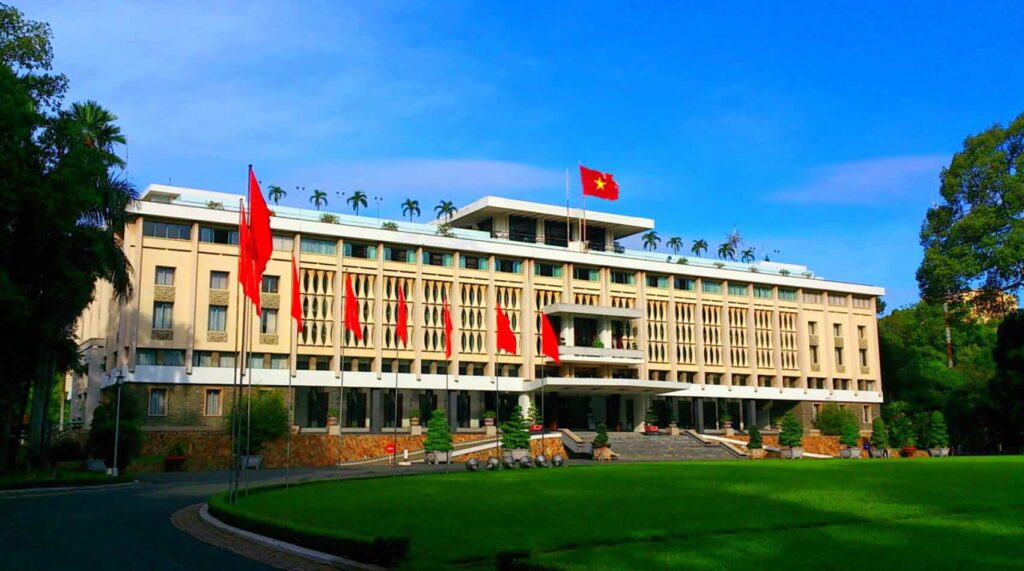
The Independence Palace
With his genius subtlety, architect Ngô Viết Thụ has built a perfect feng shui building with the shape of site is laid out in the form of the word “CÁT”, which stands for good fortune and blessings. The wooden columns beneath the eaves of the Palace, the concrete facades, in the front of the house, the full balcony on the second and third floors combined with the main entry gate, and all of these are symbols for the values of the palace. We can plainly observe how the Chinese letters “Cát” for wealth and “Vương” for the monarch, among others, are reflected in the Palace’s construction.
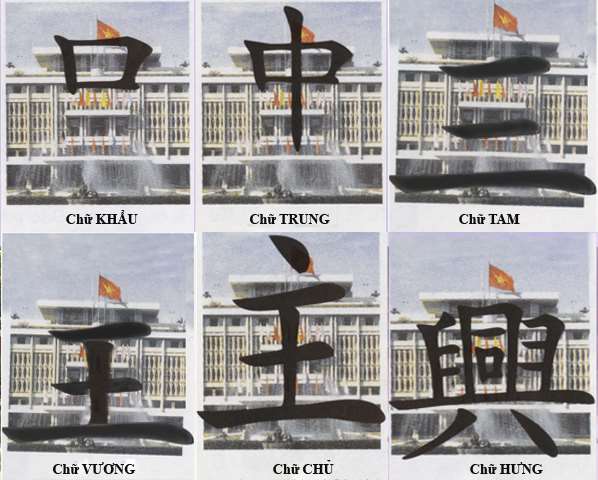
The Chinese characters that the building represents
However, the beauty is only remained in its form but behind it, there are countless rumors about the mysterious affection of feng shui to many events that happens to the Palace.
As a person, who has a strong faith in feng shui, Nguyễn Văn Thiệu believes that his own career-path is deeply influenced by the terrains, places that lies on the dragon veins (Feng Shui believes that the earth is alive, and the direction of place mainly affects one’s life-path, and those who had their buildings, or house built on the ranges that shapes like the dragon will have longevity and prosperity) , with the dragon’s head located at the palace and the tail located at the Turtle Lake. But at that time, it was thought that the Dragon’s tail was free to move, indicating that his career would not last. In order to prevent the dragon’s tail from shifting and to ensure its stability over the long term, president Nguyễn Văn Thiệu devised a massive sword that was to be hammered into the lake. A yin and yang figure in the center of the lake’s campus, which is formed like a bagua, works in harmony to balance off the force of the dragon’s tail.
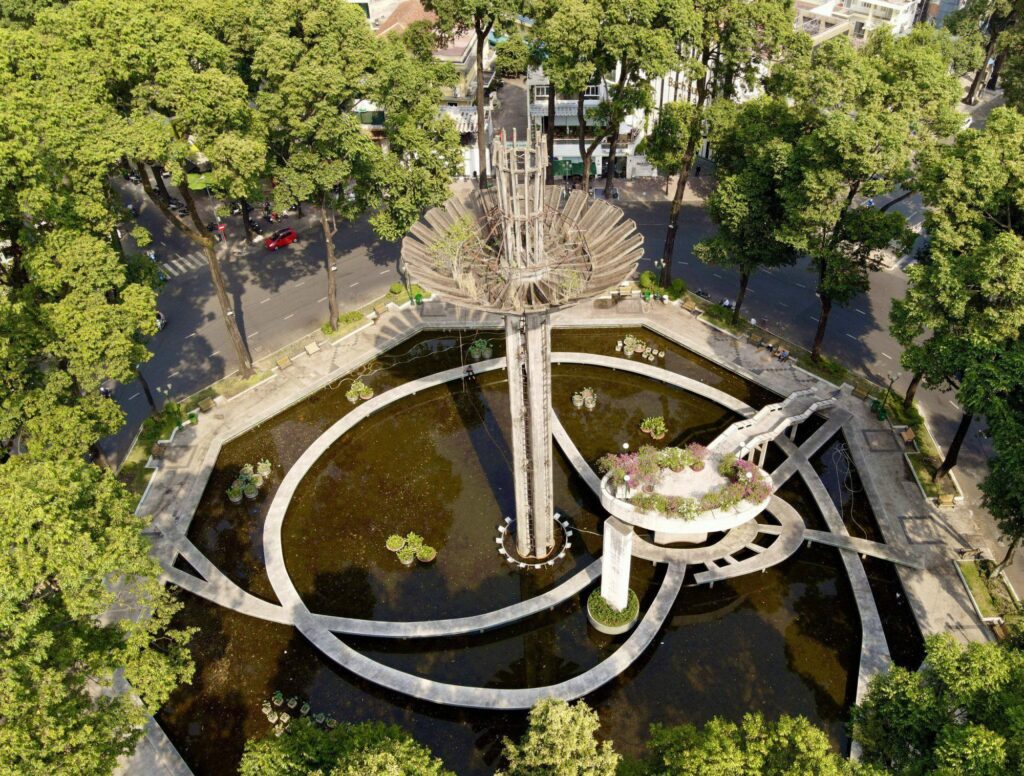
The Turtle Lake nowadays
But where is the turtle now? Since we couldn’t see any, many tourists who arrived in Ho Chi Minh City inquired about the turtles, yet Saigonese still refer to the lake as the Turtle Lake. The turtle is still visible if we look through old pictures of Saigon. But where is it now, though? On April 1, 1976, a terrorist attack occurred, resulting in an explosion that left one person dead, four others injured, and entirely destroyed the bronze turtle that had been put in the center of the lake. The turtle hasn’t been there since, but Saigonese are accustomed to calling it by its old name and they’re still calling it the Turtle Lake.
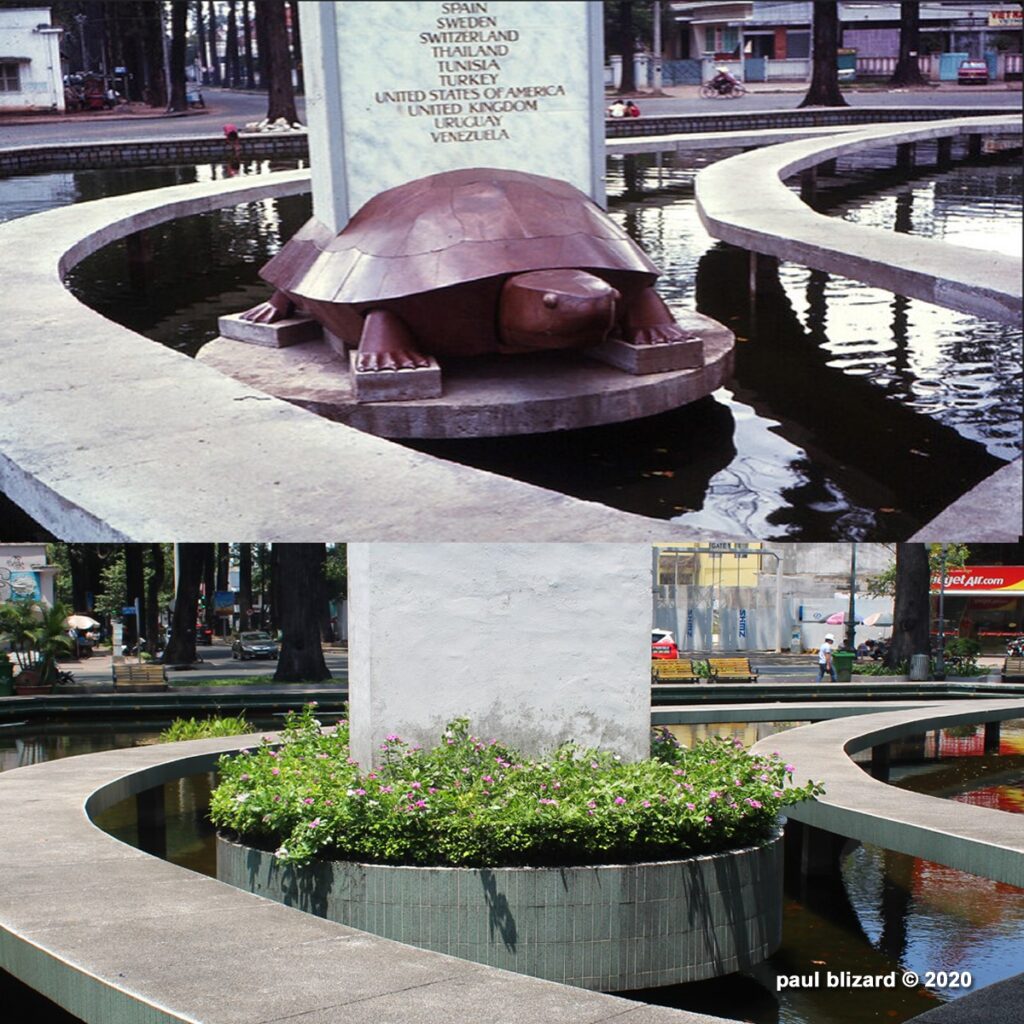
The Turtle Lake in 1972 and 2022
But why didn’t the latter Vietnamese government take the Palace and transform it into their political centre? The answer is believed as Le Duan Street is said to have the shape of an arrow or a sword that pierces directly through the palace and the center of the area, which is considered taboo in feng shui. According to many theories, this might be the secret cause of the previous regime’s downfall, which is still remained a mystery which hooks tourists to visit and discover this mystic Palace.
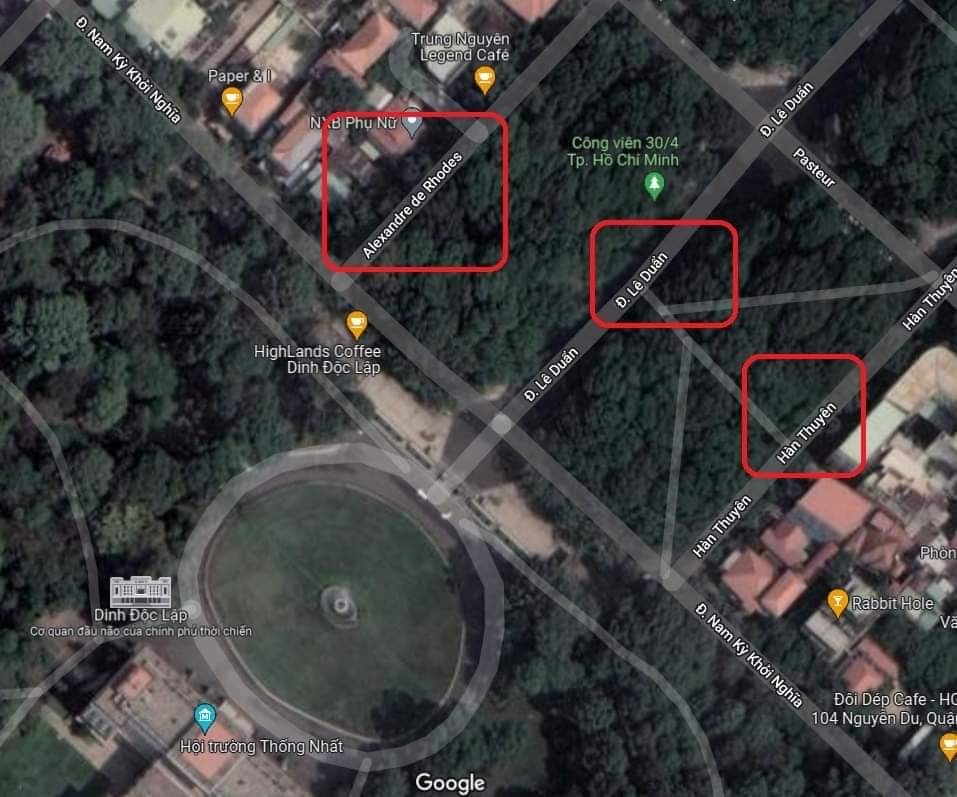
The land of Quang Binh is favored by nature, possessing a large, pristine system of both large and small caves, which...
The central province of Binh Thuan is becoming an attractive tourist attraction for domestic and international...
There were up to 31 million domestic tourists recorded in the January-September period, up 11% year-on-year and higher...
The number of foreign visitors to Hanoi in the first nine months of this year amounted to 1.9 million, a year-on-year...
The 2013 culture and tourism week in Da Lat city will be organised from December 27-31 with four main activities: the...
The ten ASEAN member nations will join India, China, Japan, and the Republic of Korea to present examples of their...
The figure was reported at the conference on promoting tourismin the Mekong River Delta during the first six months in...
10. Nha Trang Nha Trang is Vietnam’s most popular seaside resort town located along the second most beautiful bays...